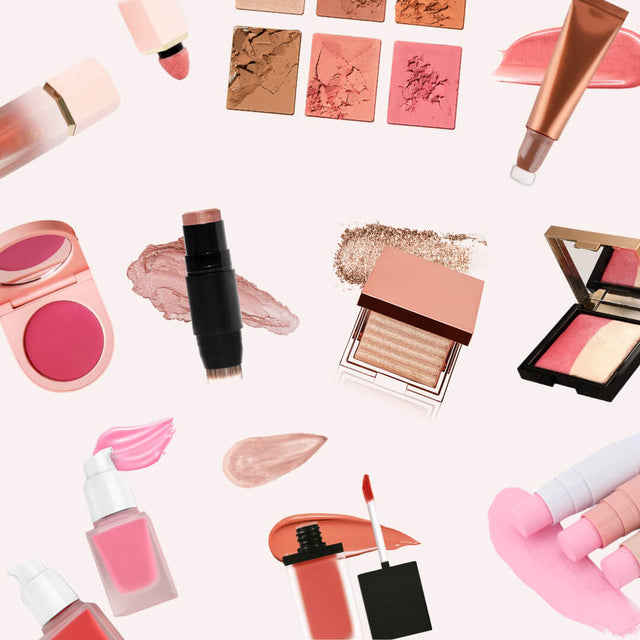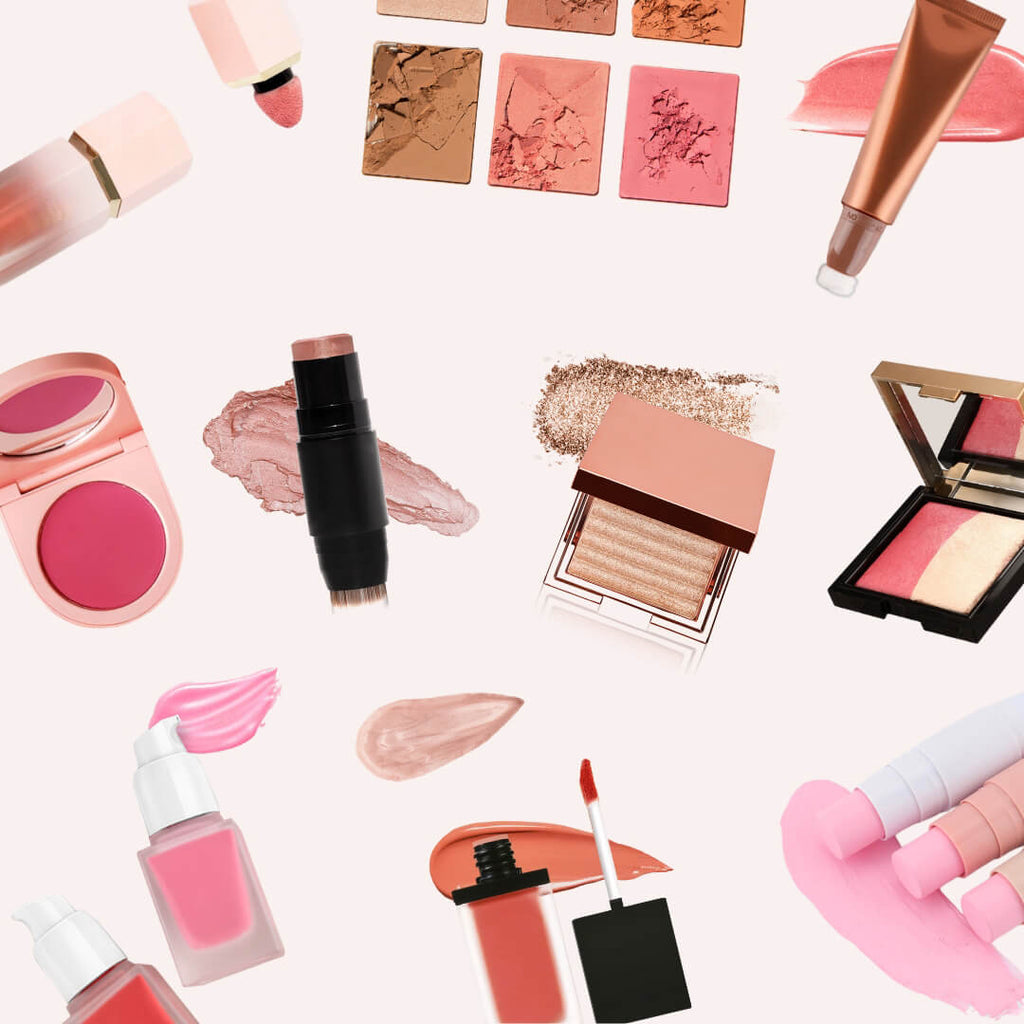The Power of a Perfect Brush
Let's face it, makeup is all about the application. And what makes a flawless finish? You guessed it - the right brushes! It's time to ditch those sponge applicators and embrace the artistry of a good brush set. But with so many options out there, how do you know what's best? We're diving deep into the world of makeup brushes to help you find the perfect tools for your beauty arsenal.
Understanding Brush Anatomy
Before we delve into the specifics, let's get acquainted with the anatomy of a makeup brush. It's all about the components that make a brush a master of its craft: * **Handle:** This is the part you hold. Handles can vary in material (wood, plastic, metal), shape (round, angled, flat), and length. Choose a handle that feels comfortable and secure in your hand. * **Ferrule:** This is the metal or plastic part that connects the bristles to the handle. It's important to make sure the ferrule is well-made and securely attached to prevent the bristles from falling out. * **Bristles:** These are the heroes of the show! The type and arrangement of bristles determine a brush's purpose and its application technique. We'll discuss bristle types in more detail shortly.
Brush Bristles: A Material Match-Up
When it comes to makeup brushes, the bristles are the heart and soul. They're what determine how the product blends, applies, and ultimately looks on your face. Here's a breakdown of the most common materials:
Natural Bristles:
* **What they're made of:**
Animal hair (often goat, squirrel, or pony) *
**The good:** They tend to be softer and more flexible, ideal for blending and picking up powder products. Natural bristles are known for their ability to distribute powder evenly and create a soft, airbrushed finish. They are also excellent for picking up and distributing pigments from eyeshadow palettes. * **The not-so-good:** Can be more expensive, require more careful cleaning, and might not be suitable for everyone (think vegans and those with animal-hair sensitivities). Natural bristles can sometimes be less durable than synthetic ones and can lose their shape over time if not cared for properly. They may also be less hygienic for those with sensitive skin, as they can harbor bacteria more easily.
Synthetic Bristles:
* **What they're made of:** Nylon, taklon, or other synthetic fibers * **The good:** Cruelty-free, hypoallergenic, and can be just as effective as natural bristles. They're also easier to clean and maintain. Synthetic bristles are becoming increasingly popular due to their versatility, durability, and affordability. They come in a wide range of shapes and densities, making them suitable for a wide range of makeup applications. * **The not-so-good:** Some synthetic bristles can be a bit stiff, especially when new, but this usually softens with use. Synthetic bristles can sometimes have a harder time picking up pigment from powder products, especially those with a drier formula. They may also be less effective for blending creams and liquids, requiring more effort to achieve a seamless look.
Must-Have Makeup Brushes
Now that we've covered the basics, let's get down to business. Here are the essential brushes every makeup lover should have:
1. Foundation Brush:
* **What it does:** Applies foundation evenly for a flawless, airbrushed look. A good foundation brush can make all the difference in achieving a smooth, even complexion. It helps to buff the foundation into the skin, creating a natural-looking finish. * **Best material:** Synthetic bristles (for a smooth, streak-free finish). The synthetic fibers are more dense and smooth, allowing for a seamless and even application of liquid foundation. They also tend to be less absorbent, preventing the foundation from being soaked up by the brush, which would result in less product being applied to the face.
2. Powder Brush:
* **What it does:** Sets makeup and applies loose or pressed powder. A powder brush is essential for setting your makeup and creating a smooth, matte finish. It also helps to absorb excess oil and prevent shine throughout the day. * **Best material:** Natural bristles (for a soft, diffused application). Natural bristles are generally softer and fluffier, allowing for a light, even application of powder. They help to distribute the powder evenly, preventing any visible streaks or patches.
3. Blush Brush:
* **What it does:** Applies and blends blush for a natural-looking flush. A blush brush is key for achieving a natural, healthy-looking glow. It helps to diffuse the color, ensuring a smooth, blended finish without any harsh lines. * **Best material:** Natural or synthetic (depending on your preference and how you like your blush). Both natural and synthetic bristles can be used effectively for blush application. Natural bristles are generally preferred for their softness and ability to blend seamlessly, while synthetic bristles can be more dense and help to deposit more color.
4. Eyeshadow Brush:
* **What it does:** Applies and blends eyeshadow, offering precise control. An eyeshadow brush is essential for creating a variety of eye looks, from subtle washes of color to dramatic smoky eyes. * **Best material:** Synthetic bristles (for better color payoff and blending). Synthetic bristles are ideal for eyeshadow because they are more densely packed and better at picking up and depositing pigment. They also tend to be more durable and easier to clean than natural bristles.
5. Blending Brush:
* **What it does:** Creates seamless transitions between eyeshadow shades and softens harsh lines. A blending brush is a must-have for creating a professional-looking eyeshadow look. It helps to blur the edges of eyeshadow, creating a smooth, blended transition between shades. * **Best material:** Natural bristles (for a soft, diffused look). Natural bristles are preferred for blending because they are softer and fluffier, creating a more diffused look. They are also more effective at blending out harsh lines and creating a soft, ethereal effect.
6. Eyeliner Brush:
* **What it does:** Creates precise lines and wing shapes with liquid or gel eyeliner. An eyeliner brush is essential for creating a clean, sharp eyeliner look. It helps to define the eyes and enhance their natural shape. * **Best material:** Synthetic bristles (for better control and precision). Synthetic bristles are ideal for eyeliner because they are more densely packed and more angled, allowing for greater control and precision during application. They are also more durable and easier to clean than natural bristles.
7. Brow Brush:
* **What it does:** Applies and shapes eyebrows for a defined look. A brow brush is essential for creating a defined and polished brow look. It helps to shape, groom, and fill in the brows for a more natural-looking finish. * **Best material:** Synthetic bristles (for better precision and control). Synthetic bristles are ideal for brow brushes because they are more angled and help to create fine, precise strokes. They are also more durable and easier to clean than natural bristles.
8. Lip Brush:
* **What it does:** Applies lipstick or lip gloss with precision and detail. A lip brush is essential for creating a precise and defined lip look. It helps to create a clean line and evenly distribute the lipstick or lip gloss. * **Best material:** Synthetic bristles (for better precision and control). Synthetic bristles are ideal for lip brushes because they are more densely packed and more angled, allowing for greater control and precision during application. They are also more durable and easier to clean than natural bristles.
Choosing the Right Brush for You
Ultimately, finding the best brushes for you comes down to personal preference. Experiment with different materials and shapes until you find what works best for your skin type, makeup routine, and desired finish. Don't be afraid to experiment with different brush sizes and shapes to find what works best for you. Consider the type of makeup you apply most often and choose brushes that are specifically designed for those products.
Cleaning Your Brushes:
Just like any tool, makeup brushes need regular cleaning to prevent bacteria growth and ensure they work effectively. Here's how to clean your brushes: 1. **Wet the bristles:** Use lukewarm water and a gentle cleanser specifically designed for makeup brushes. 2. **Lather:** Gently lather the bristles in the cleanser, making sure to work the product into the brush head. 3. **Rinse:** Thoroughly rinse the bristles under running water, making sure all of the cleanser is removed. 4. **Reshape:** Gently reshape the bristles by squeezing out excess water and laying the brush flat to dry. Avoid drying your brushes upright, as this can cause the water to seep into the ferrule and damage the brush.
Brush Sets: A Convenient Option
If you're looking for a convenient and cost-effective way to build your brush collection, brush sets are a great option. They offer a variety of brushes in different shapes and sizes, covering a wide range of makeup applications. When choosing a brush set, look for one that includes a mix of essential brushes, such as a foundation brush, powder brush, blush brush, and eyeshadow brushes.
Investing in Quality
While you may be tempted to go for the cheapest option, investing in high-quality brushes is worth it in the long run. They'll last longer, perform better, and make a noticeable difference in the overall quality of your makeup application. Look for brushes with well-made ferrules, sturdy handles, and soft, durable bristles. Remember, a little investment in quality brushes can make a big difference in your makeup game!




